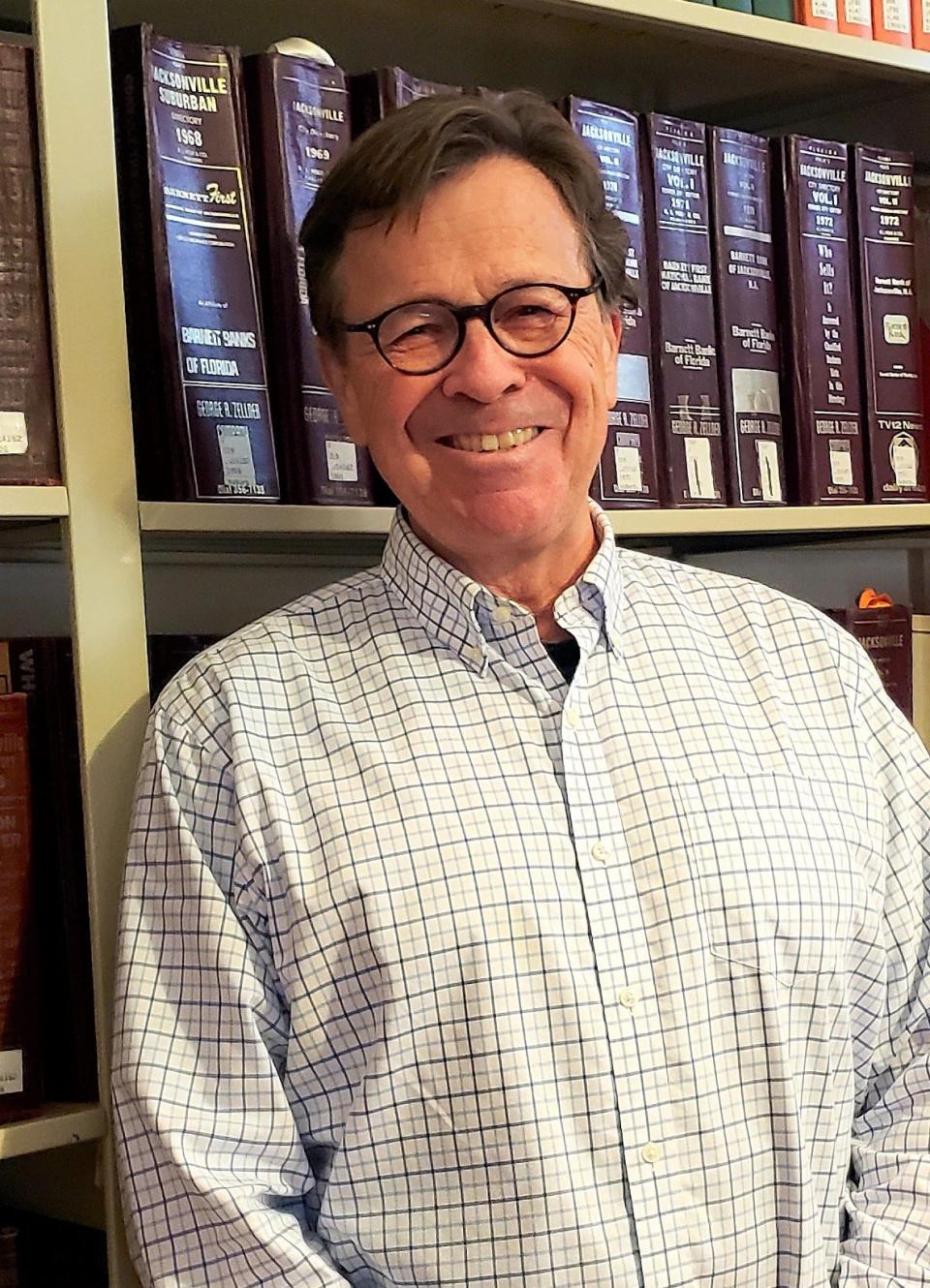Alan Bliss: Thinking about civic identity as Jacksonville enters its third century
![McCrory's (1959): McCrory's opened at the corner of Hogan and Bay Streets in September of 1959. The Bay Street store closed in 1995 after the company had financial difficulties. Hotel Aragon is pictured to the left and Barnett National Bank and Hotel Seminole are at rightin the background. [Florida Times-Union archives]](https://s.yimg.com/ny/api/res/1.2/t36WFgwRsk7G98op.Yk5aQ--/YXBwaWQ9aGlnaGxhbmRlcjt3PTEyNDI7aD04MDE-/https://media.zenfs.com/en/the-florida-times-union/59370a888effe3ead031b8b5daa269e1)
How much history can a city accumulate in 200 years? A lot! Jacksonville’s history is more plentiful — and more interesting — than many places in Florida but compared to our peer cities, we seem less concerned with our civic heritage. Why that is so makes for a lively conversation about Jacksonville’s identity. Whether it’s to explain a place or a person, the past is always where we look.
In previous columns we looked at Jacksonville’s first 100 years, from 1822 to roughly 1922. Now it’s time to begin a bicentennial glance at our most recent century.
If we only measured Jacksonville’s existence since the beginning of the Roaring Twenties, that would be enough to occupy a team of historians. From 1920 to 1925, in just five years, the city’s population grew by almost 9 percent.
The 1920s saw Jacksonville reach the zenith of its downtown commercial prosperity, with the construction of modern high-rises such as the Barnett Bank building (now The Residences at Barnett), a new federal courthouse (now the State Attorney’s offices), as well as new church sanctuaries, schools and factories. Many are now landmarks, at or nearing their own centennials.
The city became a car town during this era. Automobile ownership skyrocketed, leading to overcrowded streets and highways. Combined with a surging population, automobilization pushed homebuilding further out into what had been Jacksonville’s hinterlands, spurring construction in 1921 of the first automobile bridge across the St. Johns River (later named for City Council Member St. Elmo “Chic” Acosta).
Matt Soergel: As Jacksonville marks bicentennial, what were the biggest turning points in city's history?
Alan Bliss: Jacksonville’s American heritage should be celebrated all year long
Letters: Is the overturn of Roe v. Wade the first step towards an official state religion?
Beyond the city limits development boomed in neighborhoods like San Jose, whose original major investor was, not coincidentally, Jacksonville’s pioneering new car dealer, Claude Nolan. The 1920s also witnessed the development of entirely new suburban neighborhoods such as Venetia, built well beyond the end of streetcar lines with automobile-owning homebuyers in mind.
In 1923 Jacksonville elected its longest serving mayor, John T. Alsop, Jr. (1874-1958), who held office for 18 years, from 1923 until 1945, with a single four-year interruption. Recognizing Jacksonville’s growing pains, Alsop promptly established the city’s first planning advisory board. Influential local women’s clubs joined in advocating for city planning in Jacksonville and by 1929 the city adopted Florida’s first comprehensive municipal plan, which emphasized street and highway programs.
The plan waved away concerns about sewage with the explanation that the St. Johns River, flowing right through town, would carry Jacksonville’s daily output of wastewater harmlessly out to sea — an assumption that proved false within a few decades.
In 1920, American women (at least those who were white) won the right to vote, thanks to the 19th Amendment to the U.S. Constitution, but it would be 47 years before the first women were elected to Jacksonville’s City Council and after more than a century, no woman has (yet) won election as mayor. Meanwhile, the question of universal civil rights continued to plague Jacksonville for much of the rest of the century, as it did most places in the states of the former Confederacy.
Racial terror lynchings in Duval County subsided after 1925, but tensions grew year by year and in August of 1960 violence on a mass scale erupted in downtown Jacksonville, on Ax Handle Saturday.

Through the 1950s, Jacksonville held sway as Florida’s most significant and influential city, the center of banking, insurance, transportation, commerce and industry. It was the city others in Florida wanted to emulate, so much so that in 1940, Tampa hired Jacksonville’s city planner, hoping that he could work similar magic in that steamy, raffish seaport town.
World War II brought even greater prosperity to Jacksonville than the Great War had, leaving it with two major naval bases (later joined by Naval Submarine Base Kings Bay) on which the region’s economy continues to stand in the 21st century. The number of Jacksonville citizens whose stories intersect with that of the U.S. Navy is hard to estimate, but their experiences cut across all boundaries of race, ethnicity, education and affluence, which makes the Navy even more significant in the life of this city.
Consider that those stories account for only parts of Jacksonville’s 21st century identity and you begin to understand the complexity of this place. Every city is unique, but Jacksonville stands out for its beauty combined with grittiness, its imposing size contrasted with its small-city feel, its serious problems balanced against its undeniable promise.
Helping to honestly and authentically explain Jacksonville is why there is a Jacksonville Historical Society. Our work is challenging, endless and endlessly fascinating. Please join us and become a part of the story.
Alan J. Bliss, Ph.D., chief executive officer, Jacksonville Historical Society
This guest column is the opinion of the author and does not necessarily represent the views of the Times-Union. We welcome a diversity of opinions.
This article originally appeared on Florida Times-Union: Alan Bliss: Civic identity and Jacksonville's third century

